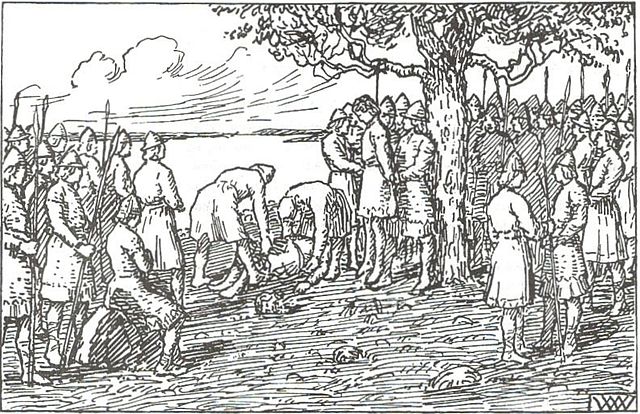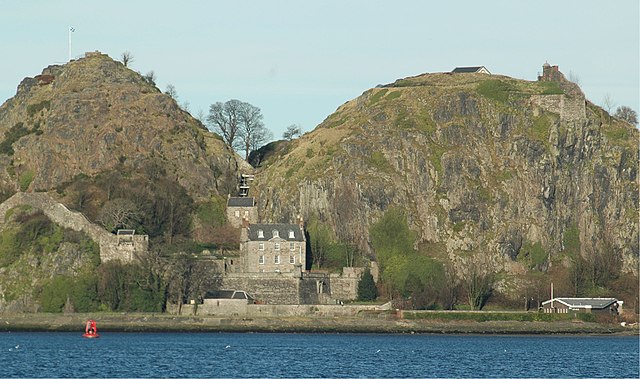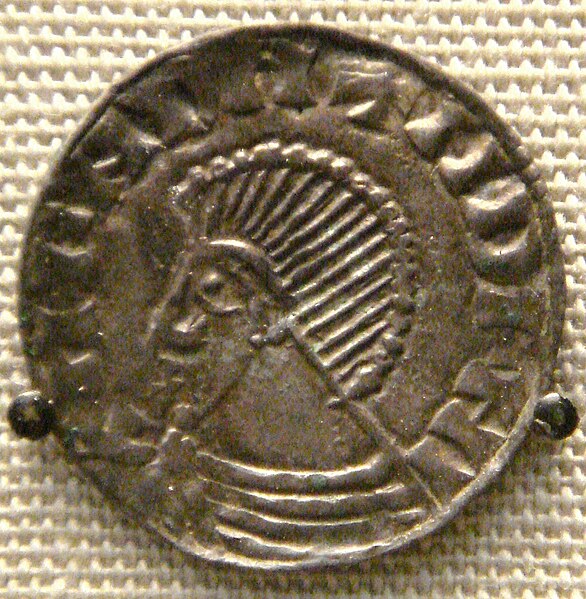Magnus III Olafsson, better known as Magnus Barefoot, was the King of Norway from 1093 until his death in 1103. His reign was marked by aggressive military campaigns and conquest, particularly in the Norse-dominated parts of the British Isles, where he extended his rule to the Kingdom of the Isles and Dublin.
Silver penning struck sometime during the reign of Magnus
Page of 13th-century copy of the Norwegian chronicle Ágrip, a source for Magnus Barefoot's life
The hanging of Egil Aslaksson, as imagined by Wilhelm Wetlesen (1899)
Magnus Barefoot's army in Ireland, as imagined in Gustav Storm's 1899 edition of Heimskringla
The Kingdom of the Isles was a Norse-Gaelic kingdom comprising the Isle of Man, the Hebrides and the islands of the Clyde from the 9th to the 13th centuries AD. The islands were known to the Norsemen as the Suðreyjar, or "Southern Isles" as distinct from the Norðreyjar or Northern Isles of Orkney and Shetland. In Scottish Gaelic, the kingdom is known as Rìoghachd nan Eilean. The territory is sometimes called the Kingdom of Mann and the Isles, although only some of the later rulers claimed that title. The historical record is incomplete, and the kingdom was not a continuous entity throughout the entire period. At times the rulers were independent of external control, although for much of the period they had overlords in Norway, Ireland, England, Scotland or Orkney. At times there also appear to have been competing claims for all or parts of the territory. The islands have a total land area of over 8,300 square kilometres (3,205 sq mi) and extend for more than 500 kilometres (310 mi) from north to south.

Signature page from the Annals of the Four Masters
Folio 32v of the Book of Kells which may have been produced by the monks of Iona and taken to Ireland for safekeeping after repeated Viking raids of the Hebrides.
Modern Dumbarton Castle, the site of the 9th-century siege by the Uí Ímair
A posthumous "Sihtric" coin from the British Museum, minted at Dublin c. 1050








